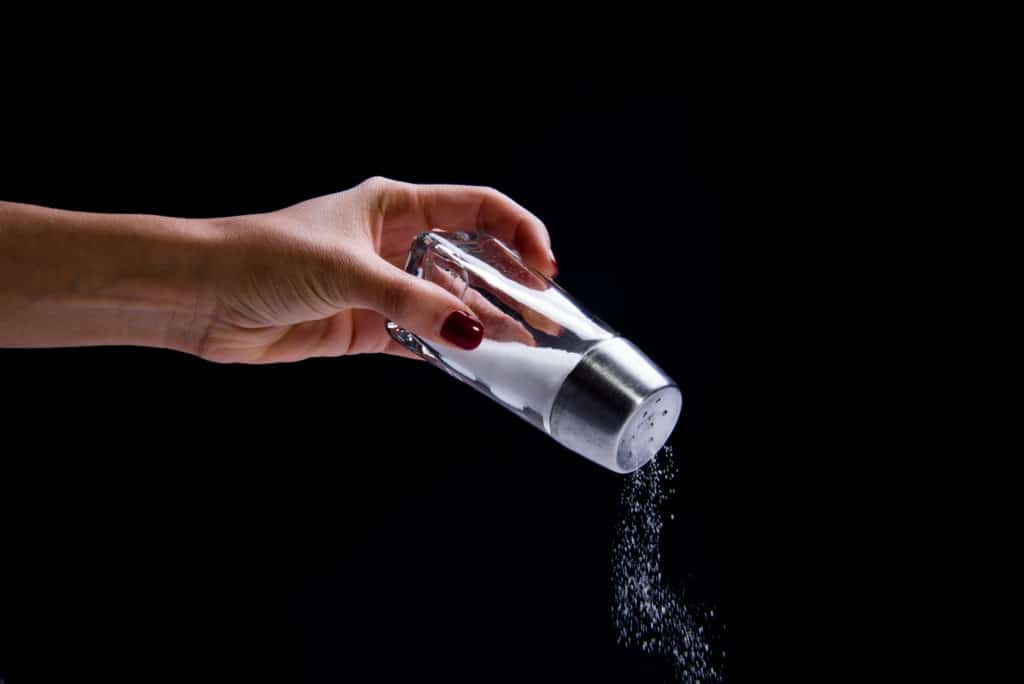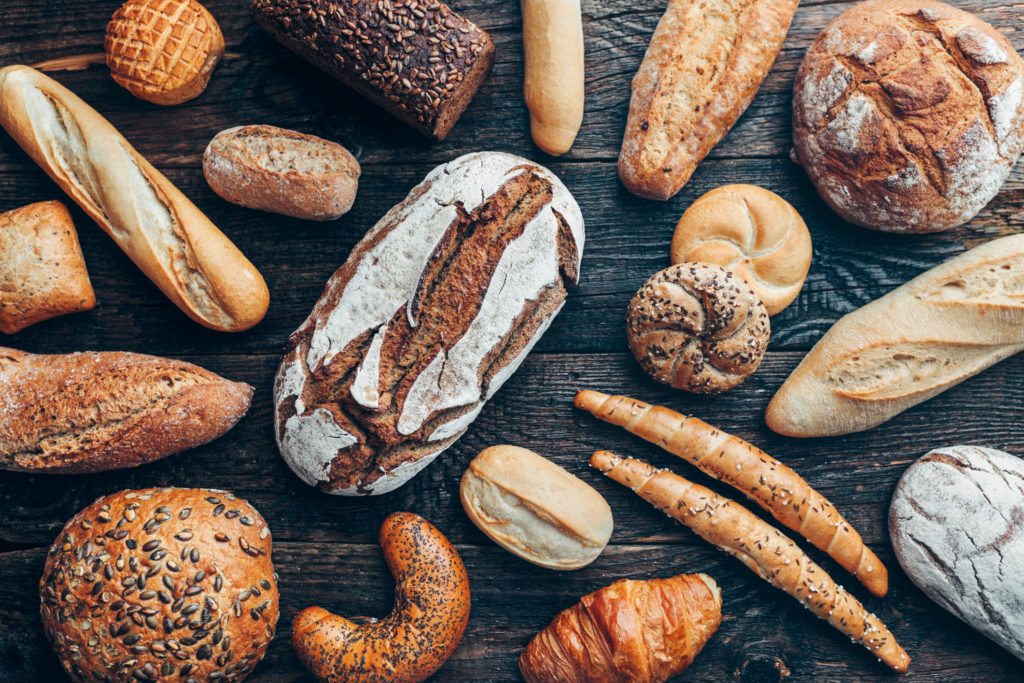Pasta is one of the most popular foods in the world, and hopefully you’ve already had a chance to review our kidney friendly pasta noodles and are now wondering what kind of kidney friendly pasta sauce you can put on your noodles to keep them low sodium and good for your kidneys.
This post may contain affiliate links through which we may earn a small commission to help keep this website free.
Table of Contents
Pasta Sauce and Sodium
Pasta sauces are notoriously high in sodium. A single half cup of pasta sauce can easily have more than 700mg of sodium (that’s almost one third of your recommended intake!). Typically, we recommend choosing foods that have less sodium than calories. This is a simple way to determine whether or not a food is high sodium or not.
However, there are certain times when choosing foods with less sodium than calories is not necessary. When a high sodium food is going to be paired with a zero sodium food, your meal may still end up low in sodium overall. This is the case with pasta.
A typical serving of pasta has 200 calories and zero miligrams of sodium (just be sure that you don’t add salt to the noodles when they are cooking). This means that you can choose a pasta sauce that has a bit more sodium in it, pair it with your zero sodium noodles, and still end up with a low sodium dish overall.
For this review, we consider a pasta sauce to be low sodium if it contains no more than 200 additional mg of sodium compared to the calories. If a sauce meets that criteria, then you can pair it with a serving of pasta and feel confident that you are enjoying a low sodium meal.
For example, here is a single serving of whole wheat rotini noodles (about 2oz when measured dry) and 1/2 cup of Silver Palate Low Sodium marinara (trust me half a cup is more than enough!):
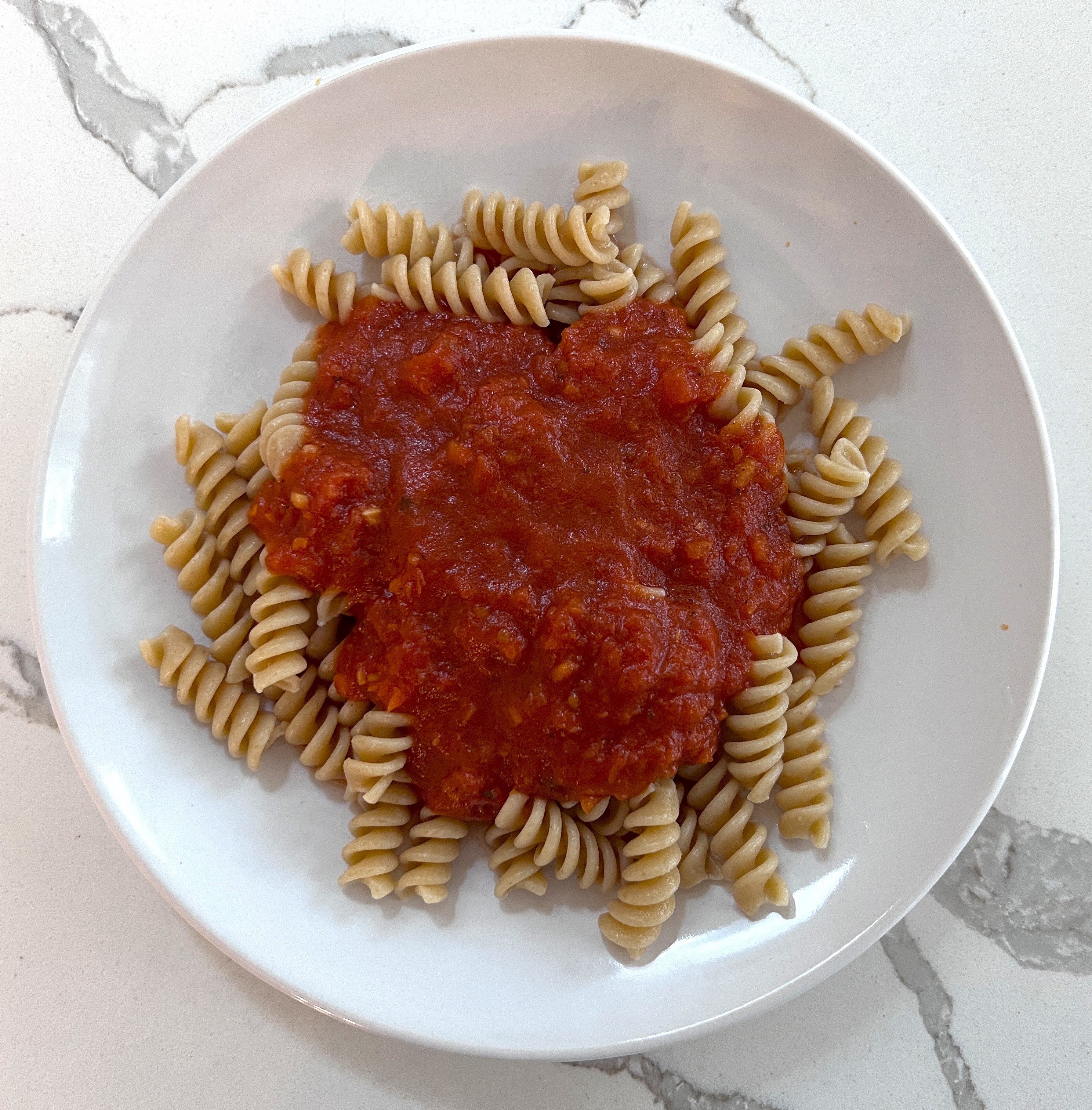
- Calories: 265
- Protein: 8.5g
- Carbohydrate: 48g
- Fat: 5g
- Sodium: 147mg
- Phosphorus
Additives: None - Potassium: 470mg
- Calcium: 44mg
- Fiber: 8.4g
- Sugar: 5g
As you can see, the overall meal has 265 calories and only 147mg of sodium – despite using a sauce that has more sodium than calories!
Low Potassium Pasta Sauce
Cream or cheese based sauces are typically lower in potassium, especially if they do not contain tomatoes. Marinara sauces tend to be higher in potassium, although they can still be enjoyed on a kidney friendly diet in moderation.
Marinara sauce is made of tomatoes, and tomatoes are sometimes considered high potassium foods. In their fresh form, I don’t really consider them to be super high. A ½ cup serving of grape tomatoes (which is roughly 8 tomatoes) contains about 190mg of potassium. Most kidney professionals consider a fruit or vegetable to be high potassium if it contains more than 200mg of potassium, so that technically means that tomatoes aren’t even a high potassium food.
Similarly, a slice or two of tomato on your sandwich or a few chopped tomatoes on your salad are not going to make your potassium shoot through the roof.
Tomatoes become problematic when you eat a lot of them, and one way to eat a lot of tomatoes without realizing it is with tomato-based marinara sauce.
One half cup of marinara sauce can have 422mg of potassium. That’s the equivalent of almost 18 grape tomatoes! In large portions, any food can turn into a high potassium food. The problem with marinara sauce is that it has the magical ability to concentrate down 18 grape tomatoes into a single half cup serving.
Now, I’m not aware of any food manufacturers that go out of their way to try and reduce the potassium content of their sauces. There are no true low potassium marinara sauces. However, it is likely that you can still enjoy marinara sauce on a kidney diet (despite the perceived high potassium content).
For those of you who are concerned about the potassium content of your food AND who love tomato sauce, let’s talk about how you can include it in your diet more easily.
Do you need to restrict your potassium?
First, verify that you need to restrict your potassium intake. Many people with CKD who are not on dialysis do not need to restrict the amount of potassium they eat (and there are many reasons potassium may be high that are not related to the potassium in your food!). In some cases, restricting potassium intake when you do not need to can have some negative consequences.
If you are on peritoneal dialysis, then you likely need to be consuming more potassium. If you are on hemodialysis, you may need to limit your intake. Be sure you are addressing other causes of high potassium levels and confirm with your healthcare provider that you need to follow a potassium restriction.
Portion sizes and potassium
The first step to lowering the potassium content of your pasta sauce is to make sure you are eating an appropriate portion. One half cup of pasta sauce can have 422mg of potassium, but if you eat a full cup of marinara sauce it can have 844. A half cup of tomato sauce has less potassium than a full cup. Maybe that sounds obvious, but portion control is very important.
Also, if you are putting this sauce on noodles and you have diabetes, then limiting yourself to just a single half cup serving of marinara sauce has the added benefit of helping you also limit the serving of high carbohydrate noodles that you eat.
Include more ultra-low potassium foods in your day
If you are on a potassium restriction, it is unlikely that marinara sauce is the sole culprit making your potassium levels go up.
It’s everything you eat in a day. If all you ate in a day was a cup of marinara sauce, that would only be 845mg of potassium. That is NOT enough potassium to cause your potassium levels rise. But when you add up ALL the foods you eat in a day, then you may get to a high amount of potassium.
In order to enjoy marinara sauce, you need to find a way to lower the amount of potassium coming from the rest of your day.
One of my favorite ways to get in some calories without getting in any extra potassium is to be pretty generous with how much olive oil (or other healthy fat) you use. Olive oil contains 120 calories per tablespoon and ZERO potassium (and for you folks with diabetes, it also has ZERO carbs).
Many people who start following a lower protein diet for CKD are unintentionally also eating a relatively low fat diet. Finding ways to add more fat into your diet to ensure you are meeting your energy needs is an important component of a kidney friendly diet.
A lot of marinara sauces are low in fat, so adding in some healthy fats like olive oil will make your meal more balances. A more balance meal that includes adequate fat will be more satisfying (which is important if you’re keeping an eye on your portion sizes). Adding some healthy fats will also help keep your blood sugars more even if you’re eating higher carbohydrate pasta, so it’s a win win!
As an example of how this works, let’s say that you wanted to eat whole wheat pasta and marinara for dinner. A single serving of pasta and noodles would have 265 calories and 470mg of potassium, but this likely would not be enough food to satisfy your hunger.
Most people will still be hungry after they eat that, so let’s say you eat one and a half servings of the pasta. If we do that, we now have 398 calories and 705mg of potassium which may be enough food for one meal, depending on the person – but it is also a lot more potassium!

Instead of eating a larger portion, what if we added a tablespoon of olive oil to the dish instead. One tablespoon of olive oil would add 120 calories to the dish, but zero potassium. Now I would have 385 calories worth of food, but still just 470mg of potassium. The dish would probably taste better with the olive oil added to it, it would be more satisfying in the long run because fat tends to make foods feel more satisfying, and the meal would contain fewer carbs, which is important if you’re trying to manage diabetes. It’s a win, win!
So, when you are planning out meals and snacks, always think about how you can sneak some more fat into your meals.
Is pasta sauce diabetes friendly?
If you have kidney disease and diabetes, then you are probably also interested in whether or not pasta sauces will raise your blood sugar. The majority of pasta sauces are tomato based, and tomatoes are considered a non-starchy vegetable (well, technically a fruit, but a relatively low sugar one!).
However, many of the sauces featured are also low in fat. When combined with a traditional pasta noodle, your meal can end up very high in carbohydrates and low in fat, which will result in a rapid rise in blood sugar.
To make these sauces more diabetes friendly, be sure to include a healthy fat like olive oil in addition to your noodles and sauce.
Also, be sure that you are controlling your portion size of pasta noodles to ensure that you are not consuming too many carbohydrates in one sitting.
Lastly, find ways to include more non-starchy veggies in your meal by either mixing them into the sauce ahead of time, or tossing them with your final dish.

Kidney Friendly Pasta Sauces You Can Buy
Kidney Friendly Marinara
The following sauces will all be relatively low in sodium. Since pasta sauces are typically combined with a 200 calories portion of zero sodium pasta, we consider a pasta sauce to be lower in sodium if it contains no more than 200 extra mg of sodium compared to calories.
Yo Mama’s Spicy Marinara
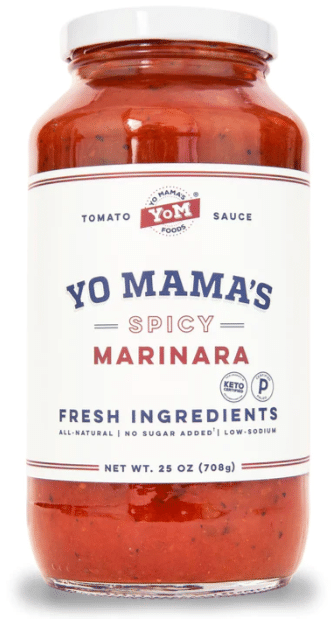
- Calories: 60
- Protein: 1g
- Carbohydrate: 5g
- Fat: 4.5g
- Sodium: 130mg
- Phosphorus
Additives: None - Potassium: 275mg
- Calcium: 90mg
- Fiber: 1g
- Sugar: 2g
Muir Glen Italian Herb Pasta Sauce
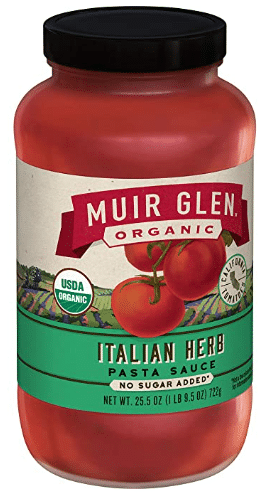
- Calories: 80
- Protein: 2g
- Carbohydrate: 8g
- Fat: 4.5g
- Sodium: 250mg
- Phosphorus
Additives: None - Fiber: 2g
- Sugar: 4g
The Silver Palate Low Sodium Marinara
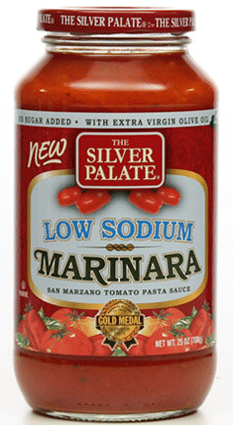
- Calories: 70
- Protein: 2g
- Carbohydrate: 7g
- Fat: 3.5g
- Sodium: 115mg
- Phosphorus
Additives: None - Calcium: 0mg
- Fiber: 2g
- Sugar: 5g
Rao’s Sensitive Marinara
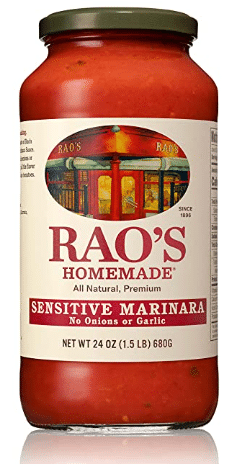
- Calories: 130
- Protein: 2g
- Carbohydrate: 6g
- Fat: 11g
- Sodium: 330mg
- Phosphorus
Additives: None - Potassium: 360mg
- Calcium: 10mg
- Fiber: 1g
- Sugar: 4g
Victoria Low Sodium Marinara

- Calories: 70
- Protein: 1g
- Carbohydrate: 6g
- Fat: 4g
- Sodium: 120mg
- Phosphorus
Additives: None - Potassium: 350mg
- Calcium: 50mg
- Fiber: 1g
- Sugar: 5g
Cucina Antica Arrabiata
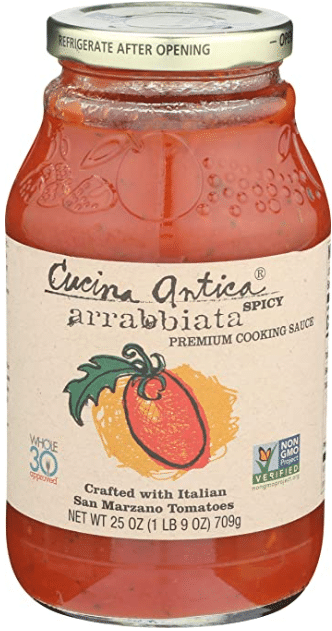
- Calories: 45
- Protein: 2g
- Carbohydrate: 7g
- Fat: 1g
- Sodium: 230mg
- Phosphorus
Additives: None - Potassium: 370mg
- Calcium: 30mg
- Fiber: 2g
- Sugar: 6g
Dell’Amore Original Recipe Pasta Sauce
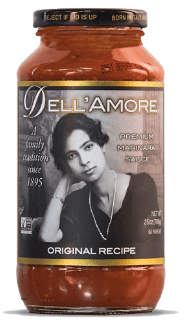
- Calories: 80
- Protein: 2g
- Carbohydrate: 10g
- Fat: 4g
- Sodium: 250mg
- Phosphorus
Additives: None - Calcium: 26mg
- Fiber: 2g
- Sugar: 6g
Cannizzaro Vodka Sauce
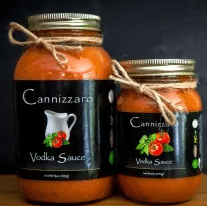
- Calories: 110
- Protein: 2g
- Carbohydrate: 9g
- Fat: 6g
- Sodium: 310mg
- Phosphorus
Additives: None - Calcium: 52mg
- Fiber: 2g
- Sugar: 5g
Wegman’s Low Sodium Smooth Marinara
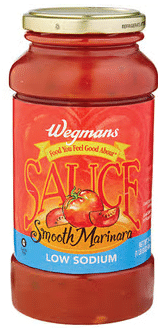
- Calories: 70
- Protein: 2g
- Carbohydrate: 10g
- Fat: 2g
- Sodium: 50mg
- Phosphorus
Additives: None - Potassium: 500mg
- Calcium: 40mg
- Fiber: 3g
- Sugar: 5g
Frik & Frak Cognac Pasta Sauce
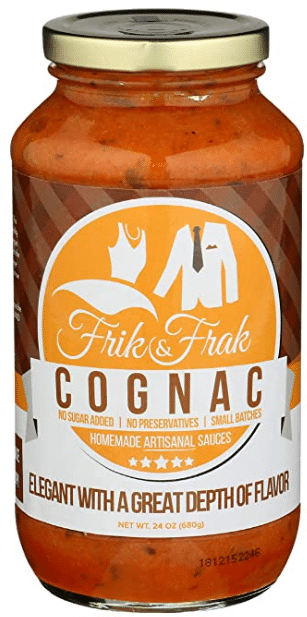
- Calories: 175
- Protein: 6g
- Carbohydrate: 0g
- Fat: 8g
- Sodium: 275mg
- Phosphorus
Additives: None - Fiber: 2g
- Sugar: 1g
Bove’s Sodium Free Marinara
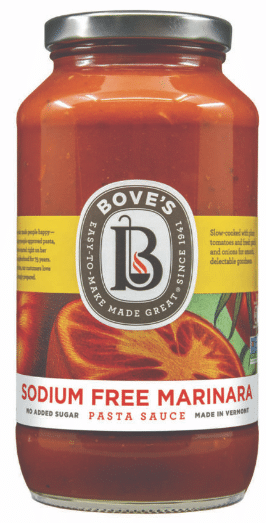
- Calories: 60
- Protein: 2g
- Carbohydrate: 9g
- Fat: 3g
- Sodium: 0mg
- Phosphorus
Additives: None - Potassium: 435mg
- Calcium: 29mg
- Fiber: 2g
- Sugar: 5g
Bona Furtuna Original Marinara Pasta Sauce
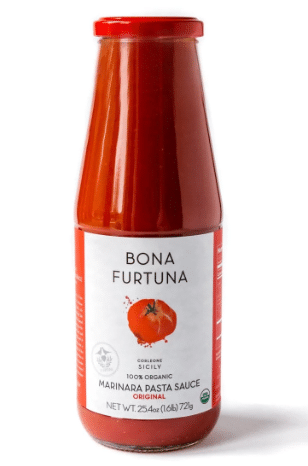
- Calories: 35
- Protein: 1g
- Carbohydrate: 7g
- Fat: 0g
- Sodium: 160mg
- Phosphorus
Additives: None - Potassium: 270mg
- Calcium: 20mg
- Fiber: 2g
- Sugar: 5g
Compagnia Sanremo Tomato & Basil Pasta Sauce

- Calories: 100
- Protein: 1g
- Carbohydrate: 4g
- Fat: 9g
- Sodium: 200mg
- Phosphorus
Additives: None - Potassium: 329mg
- Calcium: 0mg
- Fiber: 1g
- Sugar: 4g
Kidney Friendly Alfredo Sauce and other non tomato sauces
Despite containing dairy, cream based sauces are not typically high in phosphorus, unless there are phosphorus additives. Phosphorus additives are not common in pasta sauces, but are more likely to be found in sauces that contain cheese, meat, or cream. Some people with kidney disease may have been told to avoid dairy foods, but this is not completely necessary.
The following sauces will all be relatively low in sodium. Since pasta sauces are typically combined with a 200 calories portion of zero sodium pasta, we consider a pasta sauce to be lower in sodium if it contains no more than 200 extra mg of sodium compared to calories.
Sonoma Gourmet Bacon Alfredo Sauce

- Calories: 130
- Protein: 2g
- Carbohydrate: 4g
- Fat: 12g
- Sodium: 320mg
- Phosphorus
Additives: None - Potassium: 0mg
- Calcium: 0mg
- Fiber: 0g
- Sugar: 0g
Good & Gather Butternut Squash Pasta Sauce
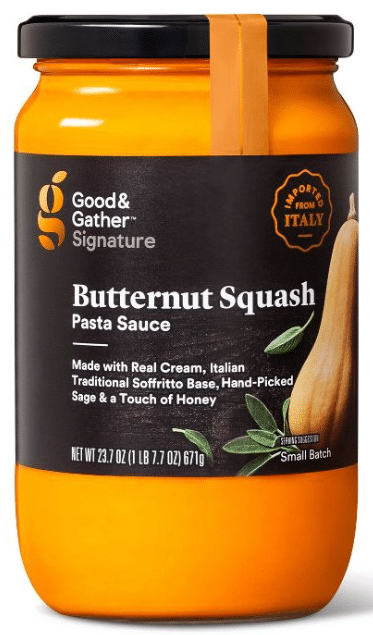
- Calories: 170
- Protein: 2g
- Carbohydrate: 13g
- Fat: 13g
- Sodium: 360mg
- Phosphorus
Additives: None - Potassium: 282mg
- Calcium: 52mg
- Fiber: 1g
- Sugar: 7g
Gustare Vita Alfredo from Hy-Vee
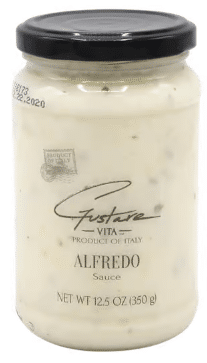
- Calories: 110
- Protein: 2g
- Carbohydrate: 4g
- Fat: 9.5g
- Sodium: 190mg
- Phosphorus
Additives: None - Potassium: 0mg
- Calcium: 65mg
- Fiber: 0g
- Sugar: 2g
Whole Foods Basil Pesto
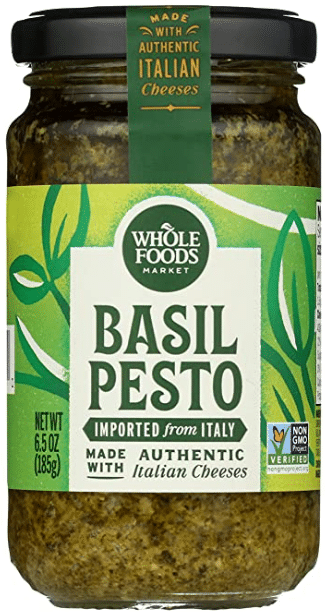
- Calories: 240
- Protein: 3g
- Carbohydrate: 6g
- Fat: 23g
- Sodium: 430mg
- Phosphorus
Additives: None - Potassium: 0mg
- Calcium: 78mg
- Fiber: 3g
- Sugar: 0g
Giovanni Rana Alfredo Sauce
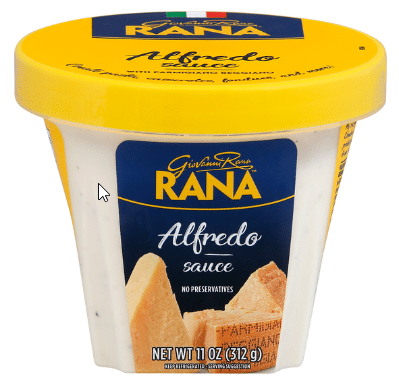
- Calories: 160
- Protein: 2g
- Carbohydrate: 3g
- Fat: 15g
- Sodium: 300mg
- Phosphorus
Additives: None - Potassium: 60mg
- Calcium: 71mg
- Fiber: 0g
- Sugar: 1g




